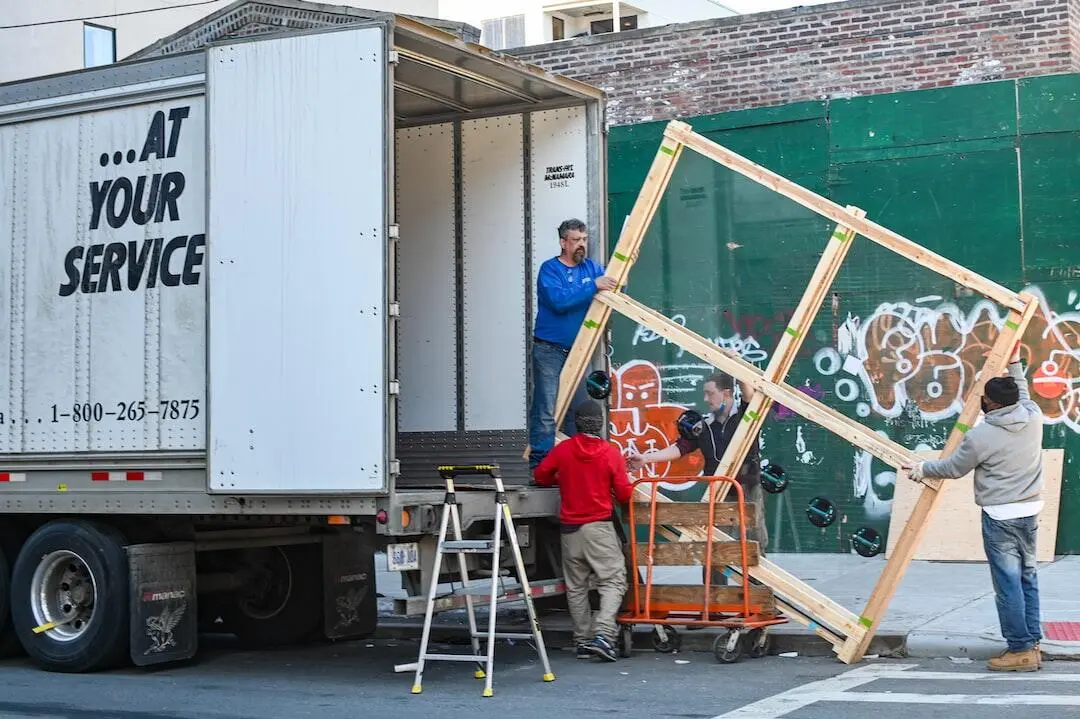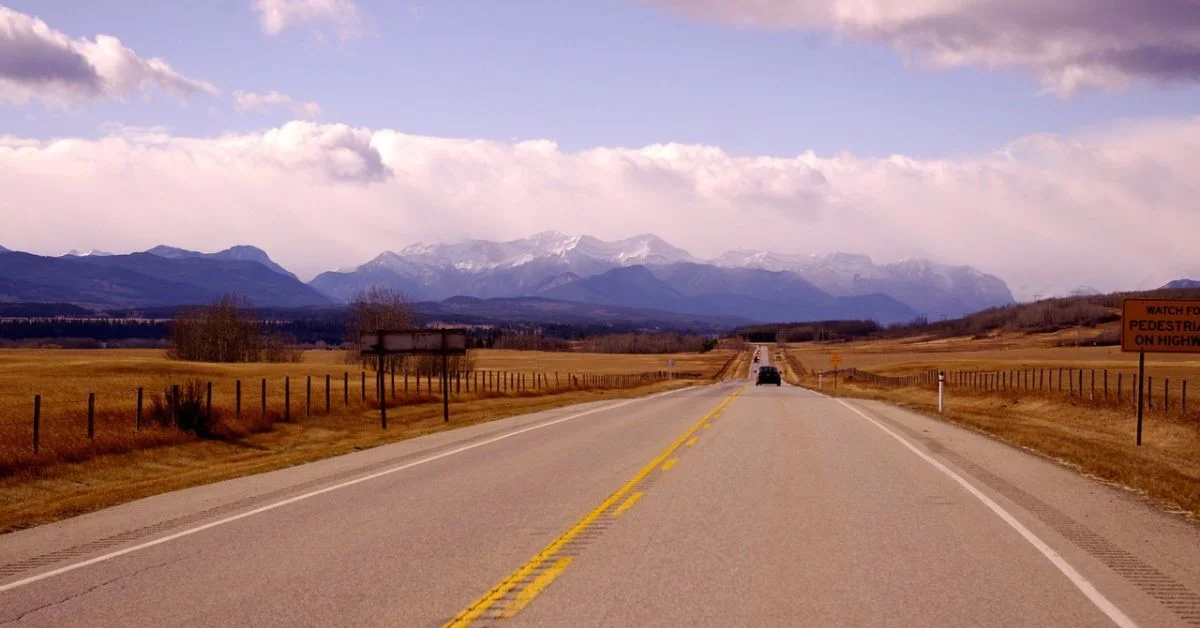Travel
How to Prepare for an Inter State Move with Packers and Movers

Moving across state lines? It’s a big leap, but fear not! We’ve got the ultimate guide to making your interstate move as smooth as silk.
With the right packers and movers by your side, this adventure can be less about the stress and more about the excitement of starting fresh. Stick around as we share how to start packing to move to your new home.
Ready for a hassle-free transition? Let’s go!
Start Early
Starting early is the first and most crucial step in ensuring a smooth move. Begin by charting out a plan at least two to three months before your move date.
This gives you ample time to organize, pack, and take care of logistics. It also allows you to:
- research and hire the best packers and movers
- declutter and downsize
- gather packing supplies
- spread out packing
- address legal and logistical details
In essence, starting early not only eases the packing and moving process but also sets the stage for a more enjoyable and less frenetic transition to your new home.
Declutter Before Moving
Decluttering before moving is a key step to lighten your load. Go through your belongings room by room and create three piles: keep, donate, and throw away.
Be ruthless, if you haven’t used something in a year, consider letting it go. Selling items is also an option, adding extra funds to your moving budget. This process can simplify packing while ensuring a clutter-free start at your new home.
Lastly, schedule a donation pickup or drop-off for items you won’t be taking with you. This will make the gesture beneficial for others and reduce your carbon footprint.
Hire Reputable Packers and Movers
It’s important to do thorough research on long-distance moving companies to ensure they are reliable and have a good track record. Here’s what you should focus on:
Check Reviews
Start by looking online for reviews and testimonials from previous customers. This will give you a sense of the company’s reliability and quality of service.
Verify Credentials
Make sure the packing and unpacking services you consider have the necessary licenses and insurance to operate across state lines. These qualifications are vital for the protection of your belongings.
Get Quotes
Contact several movers to get quotes. This will not only help you budget accordingly but also give you leverage in negotiating the best possible rate.
Ask About Experience
Specifically, inquire about their experience with interstate moves. Experienced packers and movers will handle your belongings with care, ensuring a stress-free process.
Discuss Services
Clarify the range of services offered. From packing and loading to transportation and unloading, understanding what’s included will help you choose the right company.
Create a Moving Packing Checklist
Creating a moving checklist is your roadmap to a well-organized move. Break down your moving process week by week, starting from two months out, and assign tasks for each week leading up to moving day.
Then, make a detailed inventory of your belongings. This will help in both decluttering phases and ensure you don’t forget anything. Next, allocate a section of your checklist for important documents such as:
- passports
- house deeds
- insurance papers
Don’t forget to include switching utilities and updating your address with banks, subscriptions, and relevant authorities. You should also list out all the packing supplies you need. Aim to have these ready well in advance.
The last week should include tasks like defrosting the fridge, final packing, and confirming details with your movers. Remember, a thorough checklist tailored to your move will save time and alleviate stress. This will allow you to focus on the excitement of your new adventure.
Label Boxes Clearly
Use a thick marker to write the contents and designated room on each box. For fragile items, mark “FRAGILE” in big letters. This helps the moving and packing service know which boxes need extra care.
Additionally, color-coding for each room can also speed up the unpacking process. Have a master list of the colors used and the corresponding rooms for easy reference.
Protect Your Valuables
When room packing, keep valuables like jewelry and important documents with you in a secure bag or container. This ensures they don’t get lost or damaged during the move.
You may also consider special crates for antiques or art pieces to ensure their safe transportation. It’s always better to be safe than sorry when it comes to your prized possessions.
Prepare for the First Week in Your New Home
Preparing for the first week in your new home involves strategic planning for comfort and necessities. Here’s how:
Unpack Essentials First
Start with the essentials box you packed earlier. This should include toiletries, a few days’ worth of clothing, medications, and necessary electronics like chargers.
Set Up Key Rooms
Focus on setting up the bedroom, bathroom, and kitchen first. Having these functional spaces will make the rest of unpacking less stressful.
Grocery Shopping
Make a list of basic groceries for the week. Include easy-to-prepare meals, snacks, and beverages. Also, don’t forget essentials like toilet paper and paper towels.
Learn Local Services
Find out about local services such as the nearest grocery store, pharmacy, hospital, and emergency services. It’s also good to acquaint yourself with the area’s waste collection schedule.
Check Utilities
Ensure all utilities are working as expected. Verify that your water, gas, electricity, and internet are fully operational. If not, contact the necessary providers to resolve any issues.
Safety First
Locate and check the smoke detectors and carbon monoxide detectors in your new home. Make sure you know where the main water shut-off valve and breaker box are located.
Take Your Time
You don’t have to unpack everything in the first week. Give yourself time to adjust and settle into your new home. Make sure you take breaks when needed and don’t overexert yourself.
Following these steps can help lessen the stress of moving in and allow you to enjoy your new surroundings sooner.
Tips for Choosing the Right Packers and Movers for an Interstate Move
Congratulations on taking the first step towards your exciting interstate move! With planning, decluttering, and the right packers and movers by your side, you’re all set for a seamless transition.
Remember, this move is not just about relocating your belongings, but about starting a new chapter in your life. Embrace the change and enjoy the ride. Safe travels!
Did you find this article helpful? Check out the rest of our blog now!
Travel
Top Firebird Models 2024: Best Picks And Reviews

Firebird Trans Am
The Firebird Trans Am stands out as a true icon in the muscle car realm. Its aggressive styling turns heads, while its performance keeps adrenaline junkies coming back for more.
Under the hood, you have options ranging from a spirited V6 to an impressive V8 that delivers thrilling horsepower. This combination makes it not just eye-catching but also exhilarating to drive.
Inside, modern technology meets classic flair. The cabin is designed for comfort and convenience, featuring intuitive infotainment systems paired with rich materials.
Handling is exceptional too. With a well-tuned suspension and responsive steering, every twist and turn on the road feels engaging.
For enthusiasts seeking speed without compromising style, the Trans Am remains an unmatched choice. Whether cruising down highways or taking on track days, this model promises excitement at every corner.
TRENDING
Mining Bittensor In The Cloud: A New Frontier
Firebird Formula
The Firebird Formula stands out as a symbol of performance and style. Its sleek design captures attention on any road, making it a favorite among enthusiasts.
Under the hood, the Formula packs robust power options. With engine choices ranging from V6 to V8, drivers can expect exhilarating acceleration and impressive handling. The balance between comfort and sportiness makes every drive enjoyable.
Inside, the cabin boasts modern features alongside classic touches. High-quality materials enhance the driving experience while tech amenities ensure connectivity and convenience.
Its sporty suspension system complements its powerful engine, delivering sharp cornering abilities. This model exemplifies what muscle cars are all about—raw energy wrapped in an attractive package.
For those who crave speed without sacrificing practicality, the Firebird Formula remains an ideal choice in 2024’s lineup. It continues to capture hearts with its blend of performance and sophistication.
Firebird Sprint
The Firebird Sprint stands out in the 2024 lineup with its vibrant personality and spirited performance. Known for its agile handling, it’s perfect for those who crave a thrilling drive.
Under the hood, the Sprint is equipped with an efficient yet powerful engine that balances speed and fuel economy. It delivers a smooth ride while still offering enough horsepower to satisfy any enthusiast.
Inside, drivers will find an interior designed for comfort mixed with sporty flair. High-quality materials enhance the driving experience, making long journeys enjoyable.
Technology features include a user-friendly infotainment system. Advanced connectivity keeps you linked to your favorite apps without distraction.
With its striking looks and dynamic profile, the Firebird Sprint is not just about performance; it’s also about style. This model captures attention on both highways and city streets alike.
Firebird Esprit
The Firebird Esprit stands out with its sleek design and sporty character. This model captures the essence of performance without sacrificing comfort.
Under the hood, drivers can expect responsive handling that makes every twist and turn an exhilarating experience. The Esprit’s engine options deliver a perfect blend of power and efficiency, catering to both speed enthusiasts and daily commuters.
Inside, it offers a driver-centric cockpit filled with modern amenities. High-quality materials elevate its interior ambiance while advanced technology keeps you connected on the go.
Customizable features allow owners to personalize their ride according to taste. From exterior colors to interior trims, each choice reflects individuality.
With its unique charm, the Firebird Esprit appeals not only for spirited driving but also as a stylish companion on any journey. Enthusiasts appreciate this blend of functionality and flair that continues to resonate in today’s automotive landscape.
Features And Specs Of Each Model
The Firebird Trans Am stands out with its aggressive styling and performance features. Powered by a robust V8 engine, it delivers thrilling acceleration and an unforgettable driving experience.
Next up is the Firebird Formula, known for its balance of power and refinement. It offers advanced handling capabilities along with a sleek design that appeals to enthusiasts.
The Firebird Sprint focuses on efficiency without sacrificing style. Its smaller engine still packs a punch while providing better fuel economy, making it perfect for daily drivers.
The Firebird Esprit combines luxury and performance seamlessly. With premium interior materials and cutting-edge technology, this model caters to those who seek comfort alongside excitement. Each model has unique specs tailored to different preferences, ensuring there’s something for everyone in the lineup.
Pros And Cons Of Owning a Firebird
Owning a Firebird comes with its unique set of advantages and challenges. One major pro is the undeniable style. Its sleek design turns heads and makes a statement on the road.
Performance is another highlight. With powerful engines, Firebirds deliver an exhilarating driving experience that enthusiasts crave.
However, maintenance can be tricky. Some owners report difficulties finding parts for older models, which may lead to increased repair costs over time.
Fuel efficiency isn’t their strongest suit either. Enjoying that muscle car vibe might come at the expense of frequent trips to the gas station.
Insurance rates can vary too. Depending on your location and driving history, owning a Firebird could mean higher premiums compared to more mundane vehicles.
Those who appreciate classic American muscle will cherish their Firebird despite any drawbacks it may present in daily life.
Reviews From Owners And Experts
Owners and experts alike have praised the Firebird lineup for its timeless appeal and performance. Many enthusiasts rave about the exhilarating driving experience each model offers. From sharp handling to powerful engines, these cars are designed for thrill-seekers.
Experts note that the Firebird’s classic styling continues to attract collectors and new buyers. The sleek design hasn’t lost its charm, making it a favorite at car shows nationwide.
Owner reviews often highlight reliability as a standout feature, with several users reporting minimal issues even after years of use. This durability has solidified the brand’s reputation in the muscle car community.
Customization is another hot topic among aficionados. Owners love personalizing their vehicles, from engine upgrades to aesthetic modifications, enhancing both power and style.
Satisfaction remains high within this passionate community—evidence of a beloved legacy that keeps burning bright across generations.
Customization Options For The Future
Customization is where the Firebird truly shines. Enthusiasts love to personalize their rides, making each model a reflection of their personality.
For 2024, potential upgrades abound. From performance enhancements like upgraded exhaust systems and suspension tweaks to aesthetic options such as unique paint jobs or custom decals, the possibilities are vast.
Technology integration is also on the rise. Imagine advanced infotainment systems tailored just for you—smart features that sync with your lifestyle while keeping that classic feel intact.
Don’t overlook interior customization either. Upgrading seating materials or adding personalized stitching can elevate comfort levels significantly.
Community-driven designs have emerged too. Online forums and social media groups provide platforms for sharing ideas and inspiration, allowing owners to connect over shared passions and projects.
The future looks bright for those looking to make their Firebird one-of-a-kind.
Conclusion
The Firebird has left an indelible mark on automotive history. Its blend of performance, style, and innovation continues to captivate car enthusiasts year after year. The 2024 lineup showcases some exceptional models that cater to various tastes and preferences.
From the powerful Firebird Trans Am with its muscular design and impressive horsepower to the sleek and sporty Firebird Formula, there’s something for everyone. Those seeking a more refined experience may gravitate towards the stylish Esprit or the agile Sprint.
Each model comes packed with unique features that enhance driving enjoyment while offering plenty of customization options for those looking to make their vehicle truly their own. With positive reviews from both owners and experts alike, it’s clear that these vehicles are not just about looks; they deliver thrilling performance too.
Whether you’re a long-time fan or new to the Firebird legacy, 2024 is set to be an exciting year for this iconic brand. Consider exploring one of these top firebird models if you’re in search of a ride that’s as dynamic as it is timeless. Your journey with this classic American muscle could be just around the corner.
ALSO READ: Seamlessly Install KDE on AlmaLinux: A Quick Guide
FAQs
What is “Top Firebird 2024”?
Top Firebird 2024 refers to the latest lineup of Firebird models for the year 2024. It showcases various models like the Firebird Trans Am, Formula, Sprint, and Esprit, each offering distinct features and performance characteristics. These models blend classic muscle car aesthetics with modern technology and customization options.
What makes the Firebird Trans Am stand out?
The Firebird Trans Am is known for its aggressive styling and powerful V8 engine. It delivers exceptional acceleration and an exhilarating driving experience, making it a favorite among performance enthusiasts.
How does the Firebird Formula differ from other models?
The Firebird Formula offers a balanced combination of power and refinement. With engine options from V6 to V8, it provides a blend of impressive acceleration and advanced handling capabilities, making it both sporty and practical.
What are the key features of the Firebird Sprint?
The Firebird Sprint is designed for agility and efficiency. It features a smaller yet powerful engine that balances speed with fuel economy. The interior offers comfort and sporty flair, while advanced technology ensures connectivity and convenience.
What customization options are available for the Firebird in 2024?
In 2024, Firebird owners can enjoy a range of customization options including performance enhancements like upgraded exhaust systems, aesthetic choices like unique paint jobs, and interior upgrades such as personalized stitching. Technology integration and community-driven designs also provide ample opportunities for personalization.
Travel
Navigating Life’s Highway: The Driving Metaphor

Introduction
Life is often compared to a journey, and one of the most fitting metaphors for this journey is driving on a highway. Just as a road trip involves planning, navigation, and adaptability, so does life. This article explores how the driving metaphor can provide insight into our life’s journey, helping us understand and approach the various challenges and milestones we encounter.
TRENDING
Unlocking The Mysteries Of Angel Number 1141
The Roadmap Of Life
Planning Your Route
Before embarking on a long drive, it’s crucial to have a roadmap or GPS. Similarly, having goals and plans in life helps provide direction. Planning your route involves setting clear objectives and preparing for potential detours. This might mean establishing career goals, personal aspirations, or relationship targets.
Setting SMART Goals
Just as you’d plan your route with specific, measurable, attainable, relevant, and time-bound (SMART) criteria, setting SMART goals in life can guide your journey more effectively. This ensures that your goals are realistic and achievable, allowing you to track your progress and make necessary adjustments.
Understanding Road Signs
Road signs on a highway provide critical information about speed limits, hazards, and directions. In life, these signs represent the advice, warnings, and insights we encounter. Paying attention to these signs—whether they come from mentors, experiences, or inner reflection—can help us navigate our path more safely and wisely.
The Journey: Obstacles And Opportunities
Facing Roadblocks
Just as highways have roadblocks and construction zones, life presents its own set of obstacles. These challenges can range from unexpected job losses to personal setbacks. Handling these roadblocks involves patience and resilience, much like navigating through roadworks by taking alternative routes.
Strategies For Overcoming Obstacles
- Stay Calm: Panicking can make the situation worse. Keeping a level head helps you think more clearly and find effective solutions.
- Adapt and Adjust: Be willing to change your plans or approach if necessary. Flexibility is key to overcoming obstacles.
- Seek Support: Just as you might seek help from roadside assistance, reaching out to friends, family, or professionals can provide valuable guidance and support.
Embracing Detours
Detours are often seen as inconveniences, but they can also lead to new opportunities and experiences. Life’s detours might take you down an unexpected path, but they often offer valuable lessons and new perspectives. Embracing these changes with an open mind can lead to growth and unexpected successes.
Benefits Of Embracing Change
- Personal Growth: New experiences often push us out of our comfort zones, leading to personal development.
- Broadening Horizons: Detours can introduce you to new people, places, and opportunities that you might not have encountered otherwise.
- Resilience Building: Adapting to change strengthens your ability to handle future challenges more effectively.
Navigating Through Life’s Highways
Maintaining Your Vehicle
Just as you need to maintain your vehicle for a smooth drive, taking care of your physical and mental health is crucial for a successful life journey. Regular maintenance, such as exercise, proper nutrition, and mental wellness practices, ensures that you are in optimal condition to handle life’s challenges.
Importance Of Self-Care
- Physical Health: Regular exercise and a balanced diet keep you energized and ready to tackle obstacles.
- Mental Health: Practices like meditation, mindfulness, and seeking professional help when needed ensure mental clarity and emotional resilience.
Fueling Up
In driving, fuel is essential for continuing your journey. In life, motivation and passion act as your fuel. Whether it’s pursuing a hobby, setting personal goals, or nurturing relationships, keeping your motivation levels high ensures that you stay driven and focused on your path.
Finding Your Fuel
- Pursue Passions: Engage in activities that you love and that bring you joy.
- Set Personal Goals: Regularly update and set new goals to maintain a sense of direction and purpose.
- Celebrate Milestones: Recognize and celebrate your achievements, no matter how small, to stay motivated.
Navigating Traffic: Social Interactions
Sharing The Road
On the highway, you share the road with other drivers, each with their own destinations and driving styles. Similarly, life involves interacting with a diverse range of people. Effective communication and empathy are key to navigating these social interactions successfully.
Building Positive Relationships
- Effective Communication: Clear and honest communication helps avoid misunderstandings and fosters strong relationships.
- Empathy and Understanding: Being empathetic towards others’ perspectives can enhance mutual respect and cooperation.
- Conflict Resolution: Address conflicts calmly and constructively to maintain healthy relationships.
The Road Ahead: Future Planning
Anticipating Road Conditions
Experienced drivers anticipate road conditions, such as weather changes or traffic patterns, to drive safely. In life, planning for the future involves anticipating potential challenges and preparing accordingly. This might include financial planning, career development, or personal growth strategies.
Preparing For The Future
- Financial Planning: Create a budget and save for future expenses to ensure financial stability.
- Career Development: Continually update your skills and seek opportunities for advancement.
- Personal Growth: Invest time in learning and self-improvement to adapt to future changes.
Conclusion
Navigating life’s highway involves careful planning, adaptability, and maintaining a positive attitude. By viewing life through the driving metaphor, you can better understand the importance of setting goals, overcoming obstacles, and embracing change. Remember, every journey has its ups and downs, but with the right mindset and preparation, you can make the most of every mile.
By applying these principles, you’ll be well-equipped to navigate the road of life with confidence and purpose. Safe travels on your journey, wherever it may take you!
ALSO READ: Optimum Energy Partners: The Lawsuit Unveiled
FAQs
What is the “driving metaphor”?
The driving metaphor likens life to a journey on a highway. Just as driving involves planning, navigation, and adaptability, so does living. This metaphor helps us understand how to approach life’s challenges and milestones by comparing them to road trips, road signs, obstacles, and detours.
How can setting SMART goals be compared to planning a road trip?
Setting SMART goals is like planning a road trip with a detailed route. SMART goals—Specific, Measurable, Attainable, Relevant, and Time-bound—ensure you have a clear, realistic plan, similar to using a GPS to map out your journey and anticipate any detours.
What should you do when facing life’s roadblocks, like you would with highway construction?
When encountering roadblocks in life, it’s important to stay calm, adapt your plans, and seek support, much like navigating through highway construction. Patience and flexibility help you find alternative solutions and keep moving forward.
Why are detours important in life, and how can they be beneficial?
Detours, while initially inconvenient, can lead to unexpected opportunities and growth. They offer new perspectives and experiences that might not have been encountered otherwise, contributing to personal development and resilience.
How does maintaining your “vehicle” relate to maintaining your well-being in life?
Just as keeping a vehicle well-maintained ensures a smooth drive, taking care of your physical and mental health ensures you’re in optimal condition to face life’s challenges. Regular exercise, proper nutrition, and mental wellness practices are key to a successful journey.
Travel
The Ultimate Road Trip Preparation Checklist for Your Vehicle

Starting a road trip is an adventure full of excitement where you have total liberty to investigate the world around you at the speed you choose. Nevertheless, the joy of hitting the open road brings along with it the duty to make certain your vehicle is ready for the upcoming journey. A poorly maintained car can get involved in a serious road crash; numbers show that road crashes cause between 20 and 50 million injuries worldwide annually.
Having a well-maintained car not only boosts the travel experience but also guarantees safety and tranquility. Before anything else, it’s vital to check and fix your vehicle so that you don’t have any surprises on the road. This article offers a detailed list for preparing your car before starting an exciting adventure – ensuring smooth travels without unexpected problems.
Ensuring Optimal Insurance Coverage
Before letting the wind in your hair, ensuring your car is properly insured is a must. Regardless of where you are—in Canada, Italy, or America—your car has to have the right car insurance just to be safe in case of unfortunate events.
Let’s take Canada as an example. Canadians are generally aware of the importance of car insurance. Making sure you have enough coverage can safeguard you against possible monetary setbacks if accidents or unexpected situations happen.
In this context, if you’re in Ontario, for example, talking to experienced car insurance brokers can help you find the most reliable and affordable Ontario car insurance options. By doing so, you’ll be presented with an array of the best options covering different aspects of car insurance, all with the help of professionals who excel at what they do.
Conducting a Comprehensive Vehicle Inspection
Checking the levels of fluids in your vehicle aids in preventing mechanical issues and ensuring a trouble-free journey. Start by examining motor oil, coolant, brake, and transmission fluids along with windshield washer liquid. Confirm they are sufficient and change as needed.
Also, look at the battery to make sure it’s fully charged and terminals are clean. Check your tires for enough tread depth and proper inflation. Look for any damage or wear on the tire itself. Examine the spare tire and collect all tools needed to change a tire if necessary.
Maintaining Brakes and Lights
For safety, especially when going on long drives in different terrains and weather conditions, it is important to check the brake pads, rotors, and fluid levels. You should get a professional to examine if these parts are working well.
If brakes don’t work properly, they can lead to extremely risky situations; therefore, this step cannot be ignored. Also, it is crucial to examine the vehicle’s lights. Confirm that all exterior lights such as headlights, brake lights, turn signals, and hazard lights are working correctly.
Packing Emergency and Comfort Essentials
A good emergency kit can really save lives when you’re on a road trip. A well-stocked kit should have items that deal with many different possible situations. You must have a complete first-aid box that has bandages, antiseptic products, pain relievers and any personal medication necessary for you.
A flashlight along with additional batteries is really important for visibility at night, and if you are stuck somewhere where it’s cold, having blankets can be a lifesaver. Bottled water and food that won’t spoil, such as granola bars, nuts or dried fruits are necessary to keep you hydrated and fed if there are delays or breakdowns.
Additionally, think about your comfort on the trip. You can pack things such as a travel pillow, extra blankets and ways to entertain yourself like books, magazines or even bring along a tablet loaded with movies and music to make those long drives more enjoyable. An updated GPS system is very important for direction but it’s smart to also bring maps in case there’s no signal.
Final Preparations and Departure
Before you leave, plan your trip ahead of time; this includes thinking about where to stop for rest, getting fuel, or sleeping overnight if needed. Also, tell someone the details of your travel and when they can expect you back for safety reasons.
Finally, do a last walk-around check of your vehicle to make sure there are no obvious problems that you might have missed earlier on. Arrange all your baggage in the appropriate storage area, ensuring it does not obstruct your visibility or hinder your movement within the vehicle. Be sure you possess any required documents like a driver’s license, registration details, and insurance papers.
Remember, a properly prepared vehicle makes all the difference in having an exciting and successful road trip.

 Business3 months ago
Business3 months agoTex9.Net Crypto: Fast, Secure International Money Transfers with Competitive Rates

 Entertainment2 months ago
Entertainment2 months agoSandra Orlow: Exploring the Life and Legacy of a Cultural Icon

 General1 week ago
General1 week agoBaby Alien Fan Bus: Watch Parts 2 & 3 on Twitter, Reddit!

 General1 week ago
General1 week agoDiana Nyad & Bart Springtime: A Swim to Success

 Business3 months ago
Business3 months agoSnapchat Planets: Exploring Your Streak Universe

 General1 month ago
General1 month agoDeeper Dive into myfavouriteplaces. org:// blog

 Business3 months ago
Business3 months agoFintechZoom Apple Stock: Real-Time Insights and Expert Analysis

 Entertainment3 months ago
Entertainment3 months agoUnlock Your Fantasy: Dive into Coomer Party Free OnlyFans Leaks!
















